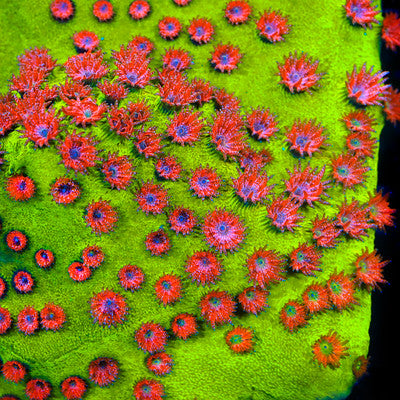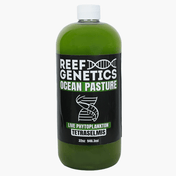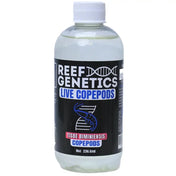Introduction: What is Cyphastrea Coral and Why It Matters
Cyphastrea are encrusting stony corals from the Merulinidae family that offer beginner-friendly care with stunning color variations. These hardy corals, commonly known as meteor shower coral due to their distinctive polyp patterns, bridge the gap between LPS and SPS classification while remaining accessible to most people starting their reef tank journey.
This comprehensive guide covers essential lighting requirements (50-200 PAR), water flow needs, feeding habits, and propagation benefits that make Cyphastrea an excellent choice for sustainable reef keeping. You’ll discover placement strategies, care requirements, and common mistakes to avoid while building a thriving coral collection.
Cyphastrea corals are ideal for mixed reef tanks and sustainable aquaculture due to their fast growth rates, vibrant colors, and adaptability to various tank conditions. Whether you’re a beginner looking for a low light coral or an experienced hobbyist interested in propagation, this article provides the complete care framework for success.
Understanding Cyphastrea: Key Concepts and Coral Classification
Core Definitions
Cyphastrea represents a genus of small polyp stony corals that hobbyists typically classify as LPS corals with small polyps, though some experts consider them SPS due to their skeletal structure. The genus belongs to the Merulinidae family, sharing characteristics with brain corals while maintaining distinct morphological features.
These corals exhibit an encrusting growth pattern as their primary form, spreading horizontally across rocks and substrate. While most specimens remain encrusted throughout their lives, some species are capable of developing rare branching and plating varieties under specific conditions in captivity.
The meteor shower cyphastrea gets its common name from the distinctive arrangement of polyps that resembles meteors scattered across a night sky. This visual effect becomes particularly striking under blue LED lighting, where the contrast between polyps and coral tissue creates dramatic coloration.
Growth Patterns and Characteristics
Cyphastrea corals feature unique polyp spacing that sets them apart from other encrusting species. The polyps are widely spaced across the coral tissue, creating the characteristic meteor shower appearance that makes identification straightforward for hobbyists.
Despite their generally peaceful appearance, Cyphastrea corals possess an aggressive nature with sweeper tentacles that extend during nighttime hours. This behavior requires careful placement with spacing requirements of 2-3 inches from other corals to prevent tissue damage and maintain tank harmony.
Why Cyphastrea Coral is Important in Reef Aquaculture
Cyphastrea corals exhibit fast growth rates that make them excellent candidates for propagation and frag farming operations. A healthy colony can expand 2-4 inches per year under optimal conditions, providing numerous opportunities for fragging and sharing within the reef community.
The sustainability benefits of captive-bred Cyphastrea specimens significantly reduce pressure on wild collection. As more hobbyists choose aquacultured frags over wild-caught specimens, the impact on natural reef ecosystems decreases while maintaining genetic diversity through selective breeding programs.
The wide color range available in Cyphastrea species appeals strongly to collectors and hobbyists seeking variety. Common color morphs include vibrant blue, red polyps, green, purple, and rainbow varieties, often displaying striking fluorescence under actinic lighting that enhances their visual appeal in reef aquariums.
Essential Care Parameters
Successful Cyphastrea coral care requires maintaining specific water parameters within optimal ranges. Lighting needs fall between 50-200 PAR, positioning these corals as excellent lower light options for reef tanks with mixed coral populations.
Core Water Chemistry Requirements:
-
Calcium: 420-450 ppm (optimal at 425 ppm)
-
Alkalinity: 8-9 dKH for stability
-
Magnesium: 1350-1450 ppm
-
Temperature: 75-82°F
-
Salinity: 1.023-1.025
Water flow requirements center on moderate, indirect flow patterns that prevent detritus accumulation while avoiding tissue damage. Direct high flow can cause polyps to remain closed and reduce feeding efficiency, while insufficient flow allows debris to settle on the coral surface.
Nutrient levels play a crucial role in coral health and coloration. Nitrate levels between 5-10 ppm and phosphate between 0.01-0.05 ppm provide optimal conditions without causing nutrient starvation. Higher nutrient levels can lead to algae growth on the coral surface and reduced coloration.
Placement recommendations emphasize low to medium light zones within the reef tank, typically on frag racks or lower rock formations. The 2-3 inch spacing requirement from other corals prevents aggressive interactions while allowing room for natural growth expansion.
Step-by-Step Cyphastrea Care Guide
Step 1: Proper Tank Setup and Placement
Choose low-medium-light zones of your reef tank where PAR readings fall between 50-200, avoiding high light areas that can cause bleaching in sensitive specimens. Position the coral on stable rocks or a frag rack where it can encrust naturally without interference from other corals.
Ensure moderate, indirect flow reaches the coral placement area to prevent detritus buildup while maintaining gentle water movement. Watch for areas where debris commonly accumulates, as these locations will require more frequent maintenance and may not support optimal coral health.
Maintain the critical 2-3 inch spacing from other corals due to Cyphastrea’s aggressive sweeper tentacles that extend during nighttime hours. This spacing allows for natural growth while preventing tissue damage to neighboring specimens.
Step 2: Lighting and Acclimation
Start with low light intensity (50-100 PAR) to prevent bleaching during the initial acclimation period. Most people make the mistake of placing new corals under their target lighting immediately, which can stress the coral and cause color loss.
Implement a gradual acclimation process when increasing light levels, raising PAR by 25-50 units weekly until reaching the target range. Monitor polyp extension and overall coral health throughout this process, adjusting the timeline based on coral response.
Monitor for signs of stress including polyp closure during daylight hours, color loss, or tissue recession around the edges. These symptoms typically indicate the need to reduce light intensity and review placement within the tank.
Step 3: Water Quality and Feeding
Maintain stable calcium, alkalinity, and magnesium levels through regular testing and supplementation. Trace elements become particularly important for long-term health and vibrant coloration, requiring periodic dosing or water changes to replenish depleted minerals.
Optional target feeding with amino acids and small zooplankton can enhance growth rates and coloration. Feed during evening hours when polyps extend naturally, using a combination of liquid foods and fine particulate matter that the coral can capture effectively.
Establish a regular water testing and supplementation schedule to maintain parameter stability. Weekly testing of major parameters and monthly trace element monitoring provides the foundation for consistent coral health and growth.
Common Cyphastrea Care Mistakes to Avoid
Mistake 1: Placing in high light zones (over 200 PAR) causing bleaching and tissue loss. New hobbyists often assume more light equals better growth, but Cyphastrea prefer lower light conditions and will bleach under excessive illumination.
Mistake 2: Excessive direct flow damaging coral tissue and reducing feeding efficiency. Strong direct flow prevents polyp extension and can cause tissue recession, particularly around the coral edges where damage typically begins.
Mistake 3: Overfeeding leading to water quality issues and nutrient overload. While target feeding benefits Cyphastrea, excessive food input degrades water parameters and can promote nuisance algae growth on the coral surface.
Mistake 4: Insufficient spacing allowing aggressive sweeper tentacles to damage neighboring corals. Many hobbyists underestimate the reach of sweeper tentacles, resulting in tissue damage to adjacent specimens and ongoing coral warfare.
Pro tip: Start conservative with lighting and flow, gradually adjusting based on coral response. It’s easier to increase intensity than recover from bleaching or tissue damage caused by excessive initial conditions.
Frequently Asked Questions About Cyphastrea Coral
Q1: How fast do Cyphastrea corals grow in reef tanks? A1: Cyphastrea are fast-growing corals that can expand 2-4 inches per year under optimal conditions with proper lighting, flow, and water chemistry.
Q2: Can Cyphastrea corals survive in SPS-dominated tanks? A2: Yes, they thrive in low-light SPS tanks and mixed reefs, making them versatile additions that complement high-light SPS corals.
Q3: Do Cyphastrea corals require special feeding? A3: Target feeding is optional; they benefit from amino acids and small zooplankton but can survive on nutrients from water column and zooxanthellae.
Q4: Why is my Cyphastrea coral losing color? A4: Color loss typically indicates stress from high lighting, poor water quality, or shipping trauma - reduce light intensity and maintain stable parameters.
Conclusion: Key Takeaways for Cyphastrea Success
Cyphastrea corals offer beginner-friendly care with stunning visual appeal for reef aquariums, combining hardy nature with spectacular coloration under proper conditions. Their meteor shower appearance and vibrant color morphs make them standout specimens in any coral collection.
Success requires low-light placement (50-200 PAR), moderate flow, and stable water chemistry maintained through consistent testing and supplementation. These fundamental care requirements remain straightforward for most people while delivering impressive growth and coloration results.
Proper spacing and a conservative approach prevent common care mistakes that lead to coral loss or aggression issues. Starting with lower intensity conditions and gradually optimizing based on coral response ensures long-term success.



















